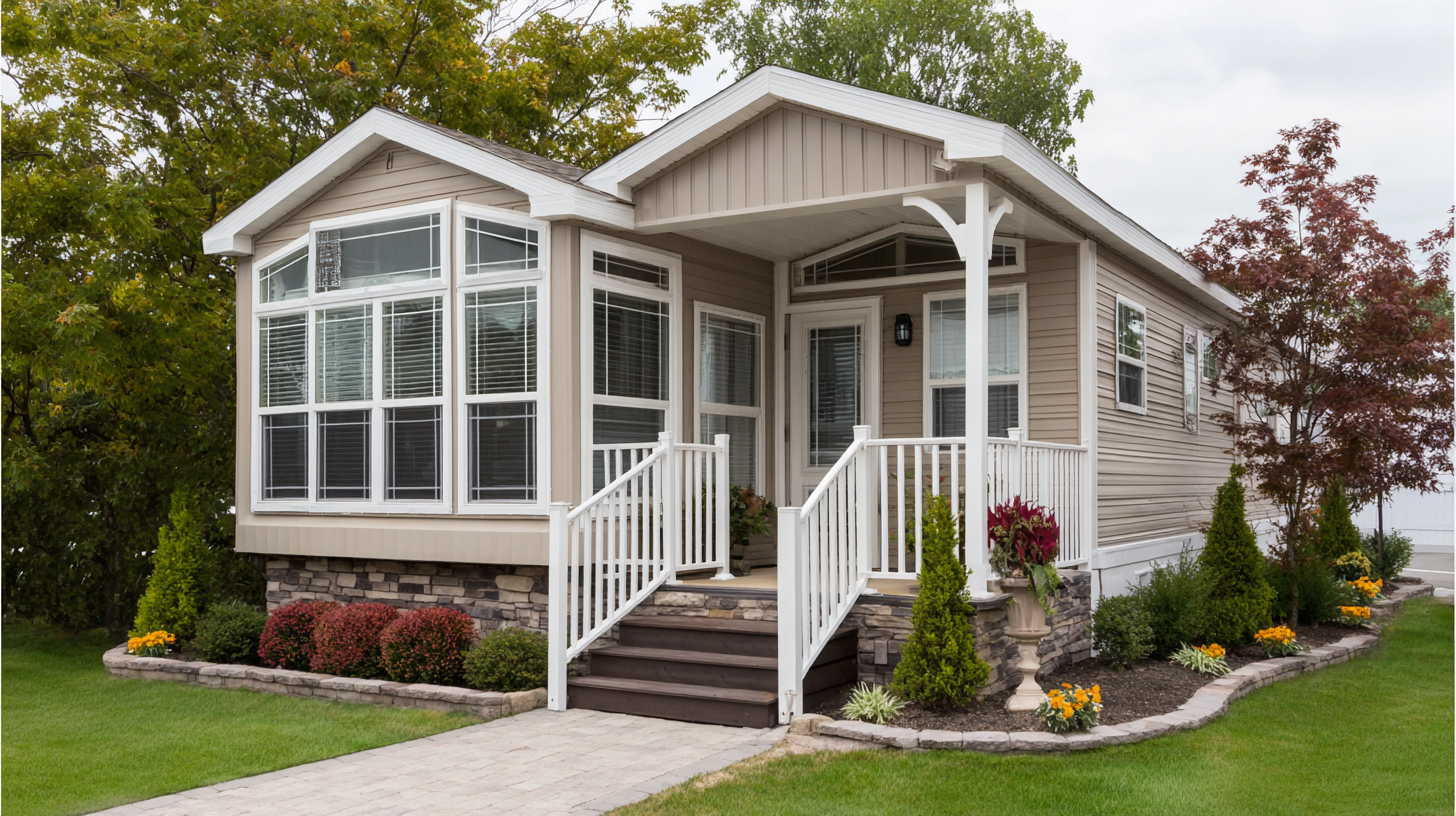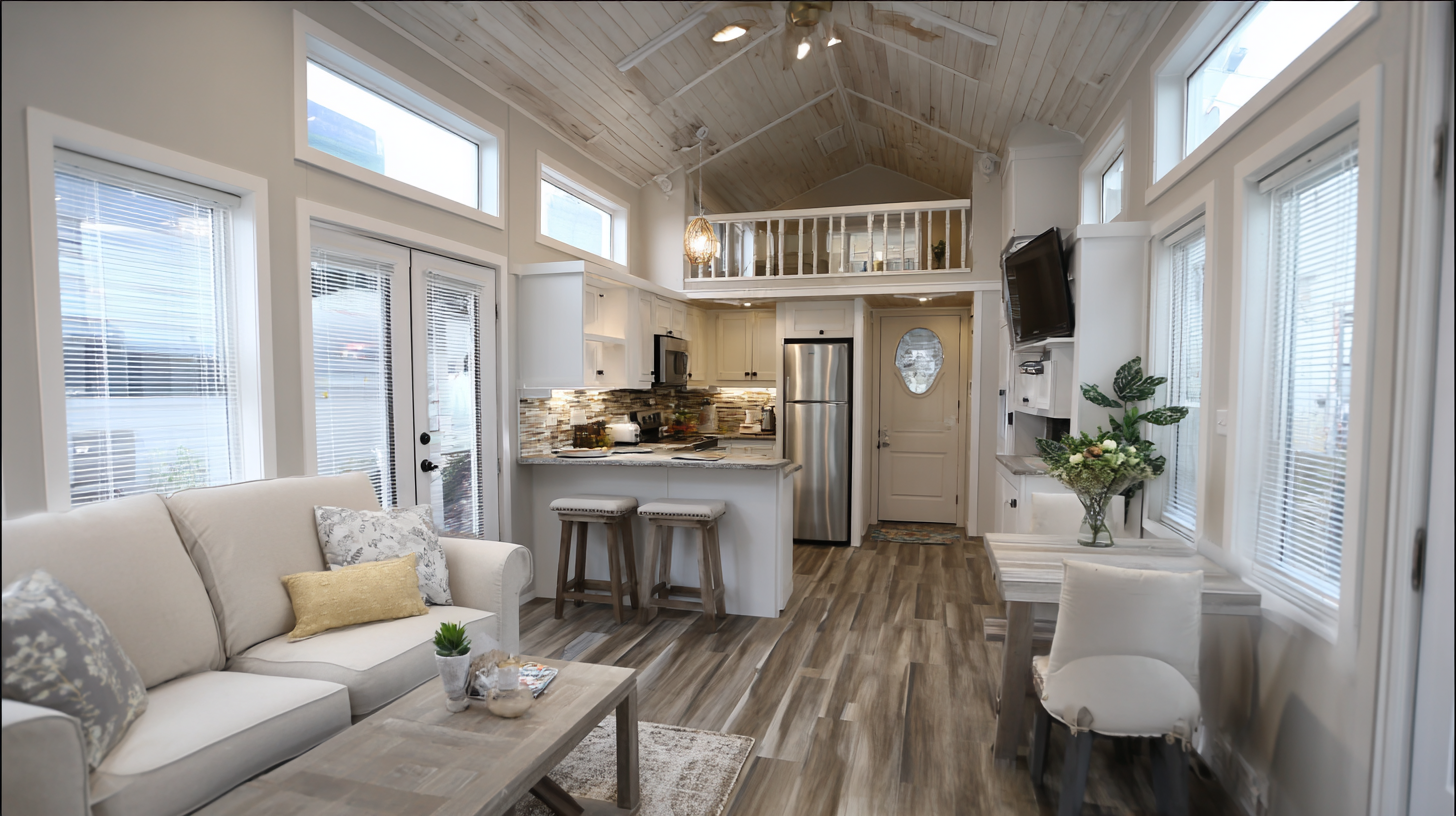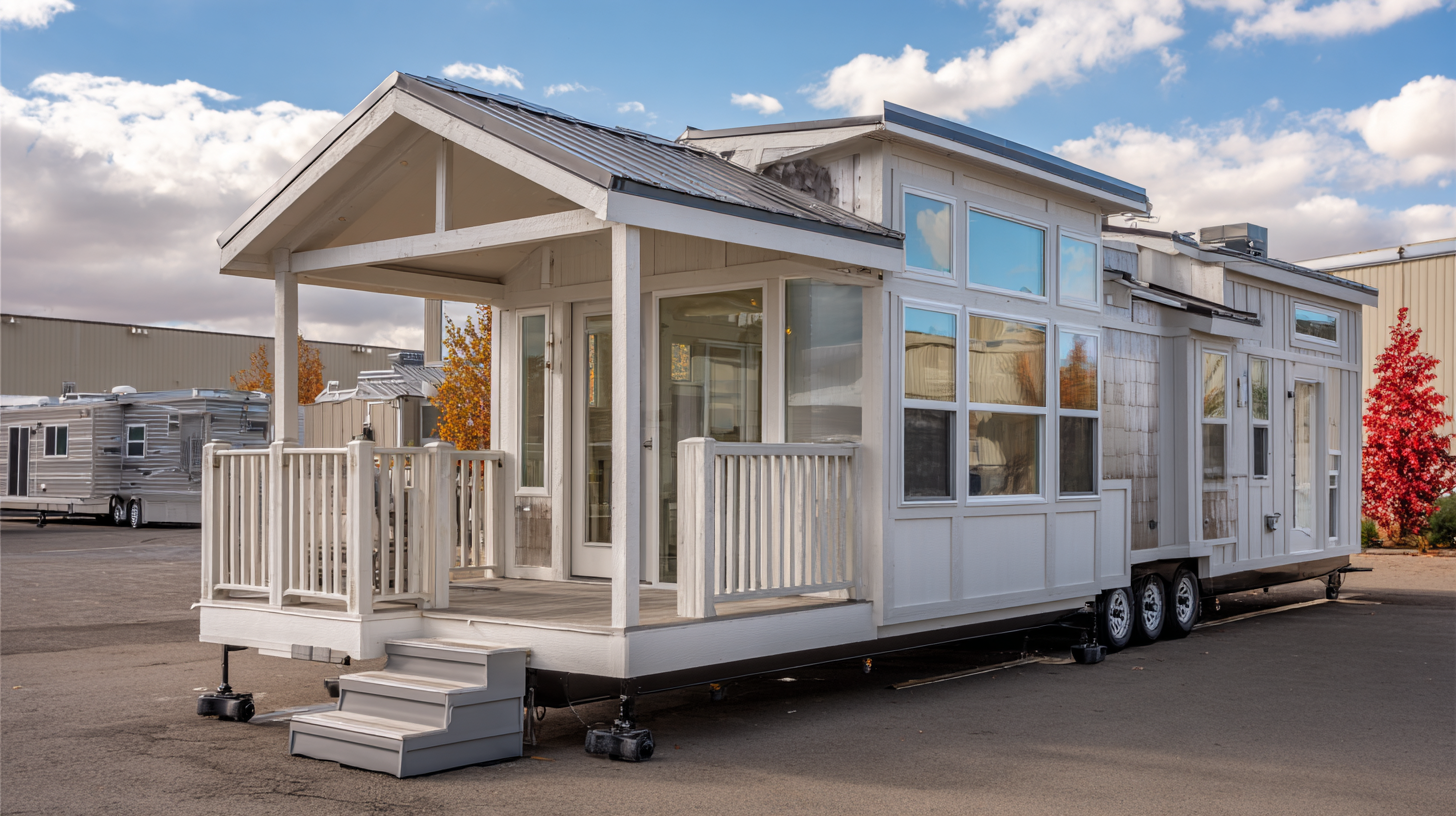As the demand for affordable living solutions grows, Park Model Homes have emerged as a popular choice for those seeking innovative yet economical housing options. According to the National Association of Home Builders, the tiny home market, which includes Park Model Homes, is projected to exceed a value of $1 billion by 2025, reflecting a significant shift towards minimalistic and sustainable living. These compact homes not only cater to the rising trend of downsizing but also provide flexible living arrangements suitable for various lifestyles.
Expert in the field, Michael Johnson, a recognized authority on modular housing, emphasizes the appeal of Park Model Homes by stating, "These homes represent a perfect blend of functionality and affordability, making them an ideal option for families and individuals alike." With cutting-edge designs that maximize space efficiency, the top 10 Park Model Homes for 2025 showcase creative solutions that redefine comfortable living without compromising style or quality. This evolution in housing aligns with the broader trend of integrating sustainability, mobility, and cost-effectiveness into our living environments, making Park Model Homes a compelling choice for the future.

The 2025 top park model homes are redefining sustainable living with innovative features that cater to both affordability and ecological responsibility. Reports from the National Park Home Association highlight that the demand for park model homes has surged by 30% over the past three years, driven by rising environmental awareness and a shift towards minimalistic lifestyles. These compact living spaces, often measuring around 400 square feet, are designed to maximize efficiency while minimizing environmental footprints, making them an attractive option for eco-conscious homeowners.
Key innovations in 2025 park model homes include advanced energy-efficient appliances and smart home technologies that enhance sustainability without sacrificing comfort. For instance, many models now come equipped with solar panels and rainwater harvesting systems, allowing homeowners to reduce their reliance on traditional utilities. According to the U.S. Department of Energy, homes that integrate renewable energy solutions can save up to 50% on energy costs annually. Additionally, sustainable materials like reclaimed wood and eco-friendly insulation are becoming the norm in new designs, providing durability while ensuring minimal environmental impact. This blend of modern convenience and green living makes park model homes not just a trend, but a significant contributor to the future of affordable housing.
 In the pursuit of affordable luxury, park model homes are leading the way with innovative designs that maximize usable space within small footprints. These compact dwellings often feature open-concept living areas, allowing for seamless transitions between spaces and creating an illusion of a larger environment. By focusing on multifunctional furniture and smart storage solutions, homeowners can enjoy a comfortably stylish lifestyle without compromising on quality or elegance.
In the pursuit of affordable luxury, park model homes are leading the way with innovative designs that maximize usable space within small footprints. These compact dwellings often feature open-concept living areas, allowing for seamless transitions between spaces and creating an illusion of a larger environment. By focusing on multifunctional furniture and smart storage solutions, homeowners can enjoy a comfortably stylish lifestyle without compromising on quality or elegance.
Tips for Maximizing Space:
Consider investing in furniture that serves multiple purposes, like a sofa that transforms into a bed or a coffee table with built-in storage. Additionally, utilize vertical space by installing shelves and cabinets that reach toward the ceiling. This not only draws the eye upward but also provides ample room for belongings without cluttering the floor.
Another innovative approach is to incorporate outdoor living spaces, such as decks or patios, which effectively extend your living area. By creating a seamless blend between indoor and outdoor environments, you can enhance your home's livability while enjoying nature. Embrace a minimalist mindset and choose decor wisely to ensure every piece complements your lifestyle and adds to the overall aesthetic of your park model home.
The integration of smart technology in park model homes is revolutionizing the way we think about affordable living. These homes, often characterized by their compact size and innovative layouts, are increasingly incorporating features such as smart thermostats, energy-efficient appliances, and automated lighting systems. These technological advancements not only enhance the comfort of residents but also significantly reduce energy consumption, making sustainable living more attainable for many.
In addition to energy efficiency, smart technology also improves the overall functionality of park model homes. Homeowners can now control various aspects of their living environment from their smartphones, whether it’s adjusting the temperature, monitoring security systems, or managing smart curtains. This level of convenience is particularly appealing in smaller living spaces, where every square foot counts. As we move toward 2025, embracing smart technology in park model home design will continue to unlock new possibilities, catering to the diverse needs of modern residents while maintaining affordability and eco-friendliness.
| Model Name | Size (sq ft) | Bedrooms | Bathrooms | Smart Features | Price ($) |
|---|---|---|---|---|---|
| Harmony Retreat | 400 | 1 | 1 | Smart Thermostat, Remote Lighting | $60,000 |
| Eco Haven | 450 | 1 | 1 | Solar Panels, Energy Monitoring | $65,000 |
| Sierra Retreat | 500 | 2 | 1 | Home Automation, Smart Security | $75,000 |
| Modern Escape | 480 | 1 | 1 | Voice Control, Smart Appliances | $70,000 |
| Green Oasis | 450 | 1 | 1 | Water Conservation, Smart Irrigation | $68,000 |
 Customization has become a key element in enhancing personal experiences across various domains, from technology to home living. In the realm of park model homes, personalization translates into creating spaces that reflect individual lifestyles and preferences. Homeowners are increasingly seeking unique designs and features that cater specifically to their needs, allowing them to express their identity within their living environment. This trend is evident in the growing demand for customized layouts, finishes, and amenities that transform standard models into distinctly personalized retreats.
Customization has become a key element in enhancing personal experiences across various domains, from technology to home living. In the realm of park model homes, personalization translates into creating spaces that reflect individual lifestyles and preferences. Homeowners are increasingly seeking unique designs and features that cater specifically to their needs, allowing them to express their identity within their living environment. This trend is evident in the growing demand for customized layouts, finishes, and amenities that transform standard models into distinctly personalized retreats.
Moreover, the rise of technology, particularly AI, is significantly influencing how customization is approached in home design. The use of advanced tools enables prospective homeowners to visualize and modify their spaces virtually, making the process more interactive and engaging. This level of personalization not only enhances the living experience but also promotes a sense of ownership and connection to the space. As consumers, especially younger generations, prioritize self-expression, the potential for customizing park model homes to fit personal tastes and functional needs is more relevant than ever, shaping the future of affordable living.
The rise of park model developments in 2025 reflects a growing trend towards community living that prioritizes affordability and sustainability. As more individuals seek alternatives to traditional housing, park model homes offer a unique solution by combining efficient use of space with innovative design. These homes are often situated in thoughtfully planned communities that encourage social interaction and promote a sense of belonging among residents. With an increasing number of people working remotely, these developments provide an attractive option for those looking for a simpler lifestyle that still incorporates modern amenities.
In addition to their practical benefits, park model communities foster an environment of collaboration and shared experiences. Many of these developments include communal spaces where residents can gather for activities, support each other, and participate in decision-making processes related to community living. This focus on connectivity not only enhances the overall living experience but also helps to cultivate a sustainable lifestyle. With the affordability of park model homes and their capacity to build vibrant communities, it’s clear why they are emerging as a compelling alternative in today’s housing landscape.
